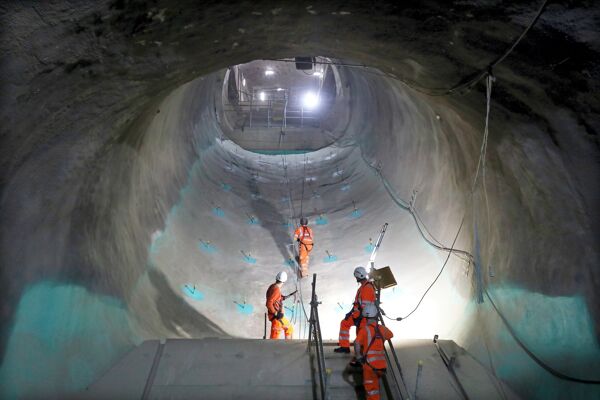
NEC has been used to procure part of a major regeneration corridor in northern England. Barnsley Metropolitan Borough Council let the Goldthorpe phase of the M1 junction 36 and Dearne Valley economic growth corridor project to contractor nmcn under an NEC3 Engineering and Construction Contract (ECC) Option C (target contract with activity schedule) in January 2020.
Grant funded by Sheffield City Region from the local growth fund, the £6 million scheme included major improvements to three existing roundabouts on the eastern section of the A6195 Dearne Valley Parkway. These link junction 36 of the M1 to a 73 ha proposed employment site off the A635 at Goldthorpe in South Yorkshire, which will provide new job opportunities in the local and wider aera. The Cathill, Broomhill and Wath Road roundabouts were all increased in size, with multiple-lane entries and dual-lane exits. Some lanes were built on embankments up to 18 m high and an existing underpass was extended.
Completed close to time and budget in March 2021 despite the Covid-19 pandemic, the scheme has reduced congestion and improved pedestrian and cycling safety through shared-use routes and designated crossing facilities. It was shortlisted for the Upgrade and Renewal Project of the Year in the 2021 British Construction Industry Awards.
Collaborative contract
Council project manager Andy Jones says NEC was chosen because of its obligation for the parties to act in, ‘a spirit of mutual trust and co-operation’. ‘NEC is a collaborative contract that ensures the parties work together throughout the duration of the contract to manage risk, cost and programme effectively. ECC Option C was selected so that both parties could share in value engineering solutions proposed across the project.’
He says the contract encouraged the contractor to propose a number of programme and cost saving value engineering proposals. ‘These were collaboratively discussed with the council to improve delivery in terms of programme and cost benefits, in addition to driving a number of sustainability benefits.’
Examples included the contractor’s proposal to change the specified 40,000 t of quarried fill for embankment construction to recycled incinerator bottom ash aggregate, a by-product from the nearby Ferrybridge power station. ‘The proximity and availability of the material enabled the embankment works to be completed 2 weeks early. It also reduced costs by £242,000 and cut the scheme’s carbon dioxide emissions by 183 t,’ says Jones.
Furthermore, by lean design and in-situ testing, the contractor was able to reduce the depth of pavement construction from the 930 mm assumed in setting the target cost to just 650 mm. According to Jones, ‘This saved £78,000 by cutting road stone requirements by 6,174 t, reducing excavation and disposal, and avoiding 309 lorry movements. It also reduced carbon dioxide emissions by a further 64 t.’
Coping with Covid-19
Jones says that despite the obstacles posed by the Covid-19 pandemic, nmcn rapidly adapted and introduced Covid-safe site facilities and working practices to minimise the effect on the programme.
‘The NEC requirement to regularly review and update the programme was achieved through online meetings that included the council, contractor, supply chain and key stakeholders. These enabled us to focus on removing any barriers to achieving the critical path. An example was carrying out extensive service diversions in parallel with the highway works, which reduced the overall programme duration and mitigated the risk of delay.’
As a result, the project was completed in 54 weeks, with minimal delay to the original pre-Covid timescale, and the final target cost was only slightly lower than the out-turn cost despite the effects of the pandemic.
On successful completion of the project, Rachael Allington, group leader of the council’s major projects team, said, ‘We are really pleased with the nmcn’s approach to this scheme from start to finish. They have performed very well in terms of health and safety, budget and programme. Their approach to traffic management and stakeholder liaison has also been noteworthy. Their true collaborative style has enabled the project to progress with positivity and openness. The final product is a first-class highway scheme which has been very well received.’
Benefits of using NEC
- NEC obligation to act in, ‘a spirit of mutual trust and co-operation’ ensured the parties collaborated throughout the contract to manage risk, cost and programme effectively.
- ECC Option C target cost contract encouraged the contractor to propose several programme and cost saving value engineering proposals.
- NEC programming requirements helped keep the project on schedule, enabling it to finish close to time and budget despite the Covid-19 pandemic.



